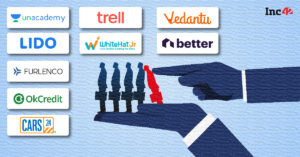Hibiscus Hype

The common flower that grows rapidly in almost every front yard and tropical garden across India has now become a regular presence on the dinner table. There are more than 200 varieties of hibiscus in India. However, people only use the five-petalled one for food.
The brilliant-red rosa-Sinensis has been through various culinary experiences with celebrity chefs cooking anything from masala prawns to quesadillas with it. And how can we forget a variety of fancy sherbets and teas?
The lockdown months of 2020 amid the COVID-19 pandemic saw more people experimenting with hibiscus in their daily diet at home.
Remya Sandeep, a homemaker from Malayalappuzha in the Pathanamthitta district of Kerala, has a mini hibiscus forest in her garden. She always cooks with hibiscus. The rasam and thoran are regular favorites. She started using more of it after the lockdown since they believe that hibiscus petals are rich in vitamin C (1).
Ramya added that recipes with hibiscus are simple. For instance, if you want to make an energy drink using hibiscus, you only need to boil water and add freshly picked petals of the red hibiscus. Once cooled, you can add ice cubes, a squirt of lemon juice, and some natural sweetener if desired.
Ramya shares that she even makes face cream with hibiscus petals. She mixes a paste of the petals with aloe vera gel, which is also from her garden and applies it to her face for clear skin.
Apart from its perceived health benefits, the crimson color adds to the overall appeal of any hibiscus-infused drinks, says Nisha MS. She recently started sipping hibiscus tea as a stress buster. According to Nisha, it helps one relax and is also very pretty to look at. She usually plucks the flower petals and sundries them. However, she warns that even dried flower petals can’t be stored for too long.
Sumayya Edamuttam from Thrissur is an active member of the tree lovers group and works towards conserving plants’ indigenous species. She says that the red hibiscus was traditionally used in hair care to make different kinds of oils and potions believed to enhance hair growth and prevent dandruff. According to her, the use of these flowers in culinary has been a fairly recent trend.
Tea Trunk, a Goa-based artisanal tea label (2), lists hibiscus tea among its best sellers. The Tea Trunk founder, Snigdha Manchanda, stated that people have become more aware of the different tea options available now and are open to trying out new tastes. The brand sells two variants, hibiscus petals and hibiscus green tea. They also offer hibiscus iced tea.
According to Snigdha, its tangy taste and natural ruby red color make it ideal for an ice tea similar to cranberry juice. She also recommends the tea for cocktails, and since the flowers are rich in antioxidants, it also works well as a relaxing drink.
Soklet, a Pollachi-based single-origin chocolate brand (3), sells hibiscus chocolates topped with pumpkin seeds. According to makers, the flowers’ tang adds to the unique flavor of the chocolate sourced from their plantations at the Annamalai’s foothills. Makers developed the recipe as an experiment for a chocolate festival in Seattle two years ago, and the chocolate made it to their best sellers list. Karthikeyan Palani Swamy, the co-founder of Soklet, stated that they found that the hibiscus’ sourness paired with chocolate and pumpkin seeds give a nutty crunch. There are plenty of almonds and hazelnuts in the market, and they wanted something distinct that also goes with the brand’s ethos.
Opportunities
It is worth highlighting that India is one of the key cultivators of the hibiscus plant, with more than 70 varieties of the plant safe for human consumption. The product has been used for treating hair-related issues traditionally in the country. The commercialization of the sector enables easy to use through several personal care products such as soaps and shampoos. It is expected to have a positive impact on the market’s growth.
Hibiscus flower is helpful against several diseases like inflammation and diabetes. Moreover, its extract showed an antimicrobial effect against diverse pathogenic bacteria, diminishing the risk of several infectious diseases. The increasing demand for hibiscus flower in type 2 diabetes treatment medication is also likely to drive the market upwards (4).
Unorganized, inadequately monitored growth coupled with volatile raw material supply and lack of skilled labor for pre and post-harvest operations is one of the major constraints faced by market players. However, since hibiscus products are increasingly popular in the end-use segment, there are expectations that it would compel cultivators to opt for hibiscus production in the upcoming years.
The rising demand for hibiscus flowers as an ingredient for herbal drinks and mixes is likely to drive market growth as the end-users get habituated with the taste, flavor, and texture of hibiscus-based food and beverage products.
The food and beverage space led the hibiscus flower powder market and valued 46.3 % of the worldwide revenue share in 2019. There is an extensive application scope for manufacturing cocktails, jelly, juice, pudding, and jam. There are expectations that these products would be the key factor for the highest market share in the segment as growing consumer interest in several packaged food products is likely to boost the product demand.
The rising weight of natural ingredients in the modern pharmaceutical and nutraceuticals segment is anticipated to positively impact the market’s hibiscus growth.
There are also expectations that the cosmetic segment would register a significant CAGR over the upcoming years because of the increasing demand for organic and natural cosmetic products such as lip balm, facial masks, hair conditioners, soap, and lotion.
Read Also: Behind the Success of ‘Natural’ Beauty Startups in India
The conventional segment led the hibiscus market with more than 76.9 % of the worldwide revenue share in 2019. The demand for these products is likely to grow up since they are easily available and cost-effective (5).
Entrepreneurs can also offer hibiscus extract-based flavoring agents that can be used in smoothies, juices, and other icy drinks.
Since there are growing concerns regarding the effects of harmful chemicals present in traditional products, the product’s capacity to eradicate the risk of soil contamination and underwater contamination helps conserve biodiversity. It makes it one of the most eco-friendly choices.
Besides serving as a natural ingredient in personal care and cosmetic products, hibiscus flowers also act as a natural colorant. Since there has been an increase in hibiscus flower powder sales in 2020, the rapid adoption of organic variants is likely to increase its market share. Key driving factors in increasing the hibiscus market share in the space include the growing significance of organic labeling in the nutrition and pharmaceutical space due to surging awareness about the disadvantages of chemicals used in manufacturing cultivation and processing.
The Hibiscus flower industry in India has several small vendors, mostly catering to the local market. The manufacturers’ increasing efforts to offer their products in supermarkets and online retail channels are expected to promote industry growth. The users’ initiatives to produce innovative products and attract consumer attention and offer added product benefits are also likely to grow. In India, where the demand for skin care and hair care products increases significantly, considering its high number of young populations demanding innovative personal care and cosmetic products are likely to challenge manufacturers to invest in R&D for product development.
DIY Nails
According to an IRI report (6), the nail category was only a few mass cosmetics markets to witness growth in 2020.
It includes artificial nails with 40.2%, nail treatment with 18.6%, and nail polish with more than 14.55% growth.
As painting nails yourself takes a lot of time and skill, there is no surprise that artificial nails and press-on gels are skyrocketing. At-home manicure kits are also gaining steady traction over the past few years.
It is also worth highlighting that the Indian nail care market is likely to grow at a robust rate through the upcoming years because of the surge in beauty and fashion consciousness among women and the increasing number of beauty salons. Apart from increasing disposable income and more working and college-going girls, they are now spending more on looking good to drive the Indian nail care market in the upcoming years.
New developments in fashion, cosmetics, and nail polish technology set the nail industry trends’ pace. And the most exciting thing about nails right now is that there is something for everyone. One can go for lengthy nails with gemstones or have natural nails with some negative space. There is so much diversity meant to allow women to reflect their personality and direct their style while getting their nails done.
Apart from DIY nail care, there are also several opportunities for entrepreneurs in DIY hair coloring, DIY self-care, and care in other beauty categories.
Read Also: The New Wanderlust World and Rising Opportunities
With people staying away from salons, quick do it yourself, at-home solutions became important. As non-essential deliveries started, there was a surge in DIY kits, grooming devices, and trimmers saw a rise in demand across e-commerce platforms like Amazon, Snapdeal. Flipkart, and Paytm Mall.
According to the Unicommerce report, the beauty and wellness category witnessed a 57% rise in demand in June 2020 compared to February 2020 (7).
The founder of Plum, a beauty and wellness startup, Shankar Prasad (8), stated that after the lockdown, things came back to business as usual on the haircare and skincare fronts as more people started ordering a lot more specialist solutions face packs, scrubs, and creams. There is a tremendous demand for DIY skincare kits.
Experts believe that DIY at-home solutions would continue to be supreme for the upcoming year, but it is a short time to change behavior, and people may soon turn to stylists. Hence, while looking at DIY beauty products’ sales, entrepreneurs will have to look at an omnichannel strategy.
Opportunities
As artificial nails, at-home manicure kits, and other products are taking off. There are several opportunities one can monetize off the trend. For instance, Static Nails, a brand rolled out in 2016, earned more than 500k (9) in sales within the first six months. And that number has since increased into an estimated 5 million to 10 million USD per year in sales.
Even subscription boxes serving the latest TikTok #nailtrends with over 104.3 million views would also do well. As per a 2021 Pinterest report (10), Gen Z inspires over 21x searches for ‘Indie nails’ and over 9x for ‘smiley face nails.’
There is also room to capitalize on other DIY nail industry trends, including male grooming and 3D printing. For instance, ManiMe (11) 3D scans one’s nails and product custom-fit, stick-on gels has recently secured 8.6 million USD, and there are expectations that it would surpass 3 million USD in sales.
Glass Blowing

Glass blowing is the activity of forming glass with a pipe and torch. It is another trend that is blowing up.
More than 50k people search for ‘glass blowing’ each month, double the numbers since October last year, according to Keywords Everywhere. Other related searches include ‘glass blowing near me’ (12.1k searches/month), ‘glass blowing kit’ (3.6k searches/month), ‘glass blowing torch’ (2.9k searches/month).
It is worth highlighting that the blowing glass technique or art dates back to 1 BCE, with its evidence found in excavations in Taxila, Pakistan. However, it was only in the early 16th century when the Mughals, the foreign warlords, brought the country’s craft as we know it today.
The Persian techniques and influence lead to different blow glass artifacts creation, including chimney shares, hookah, perfume bottles, urns, and jugs. The same period also witnessed the advent of glass gilding and coloring techniques. However, after the independence, finally, the glass industry that grew around Firozabad, Uttar Pradesh, focused on molded glass. The art of glass blowing became restricted to a handful of artists.
However, an increasing number of lighting designers desire blow glass for their design. And they are also encouraging the glassblowers to help them create custom glassware (12).
Klove, a Delhi-based design studio (13), adapts mixed glass blowing techniques with the surgical glass industry to create product massive, 4 ft to 6 ft blow glass orbs that are fashioned into contemporary lighting and decor. It is worth highlighting that they are priced between 45k INR to 7.5 lakh INR (about 620 USD to 10.5k USD).
According to Srila Mookherjee (14), considered among the best-known Indian blow glass artists, considering the glass industry scales and trained labor, India has a huge potential to create luxury products. She added that we need to focus on design and training to make it a full-blown industry.
The blow glass global market has an important size with a 4.5% market growth projection between 2019 and 2025 with lead markets in India, Brazil, China, South Africa, Russia, and growth inclusions in the Asia Pacific and the Middle East recent years.
Opportunities
While the glass blowing technique and products have huge market potential, the activity is also bubbling up across social media channels. #Glassblowing has over 1.1 million posts on Instagram and more than 1 billion views on TikTok.
Jerrad Santmyer, a glass artist (15), has more than 35k followers, and he sets a daily action for his miniature glass creations. They are consistently sold out.
Even though glass blowing equipment can be expensive, there are several ways for entrepreneurs to monetize the trend. One can take advantage of the breathwork rising trend and start a mobile application for breathing art creations.
A scroll across related subreddits, with r/glassheads over 100k members, r/glassblowing more than 20.3k members, and r/lampwork with over 10.4k members, indicates that glass blowing is riding the wave of legalized recreational cannabis.
One can also partner with local glass artists and sell pipes, bowls, and more.










